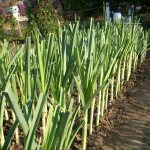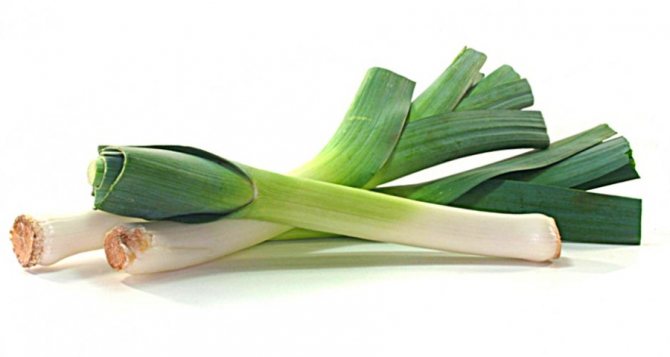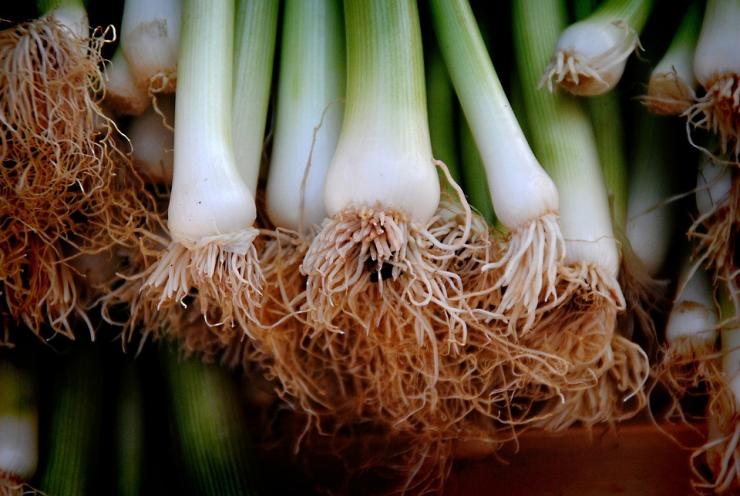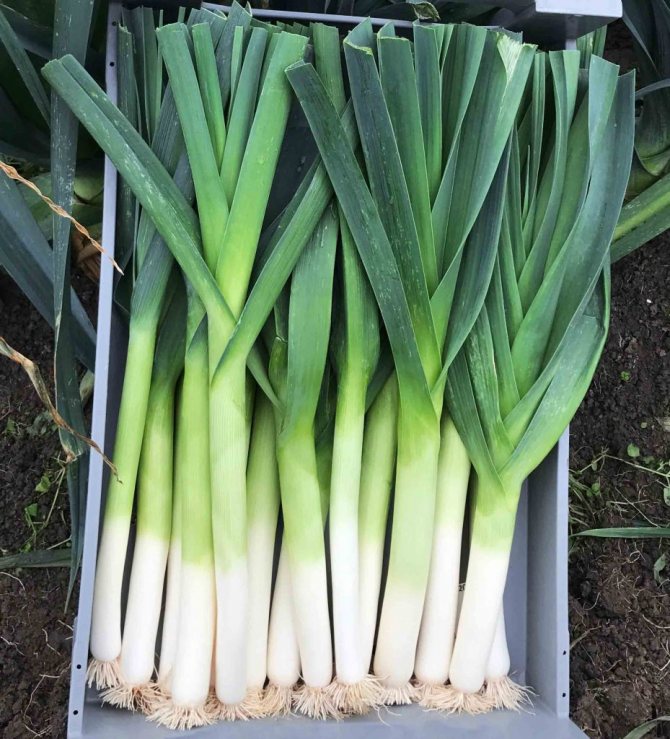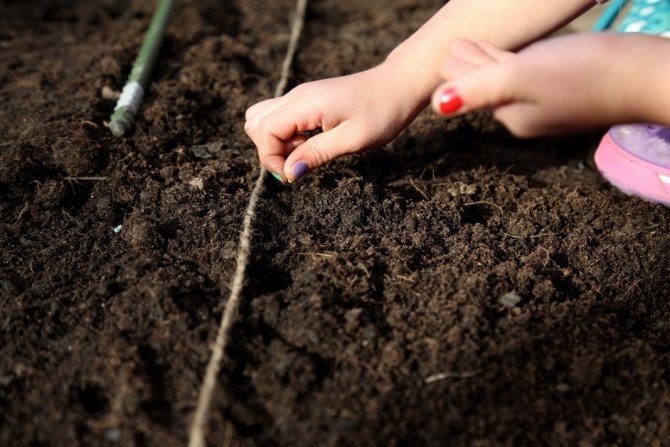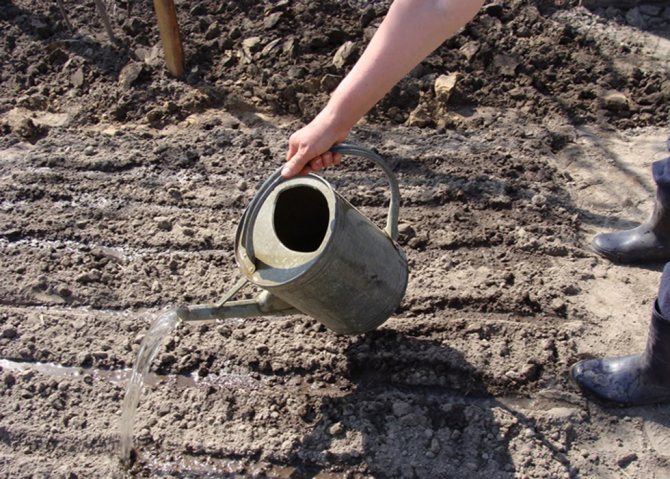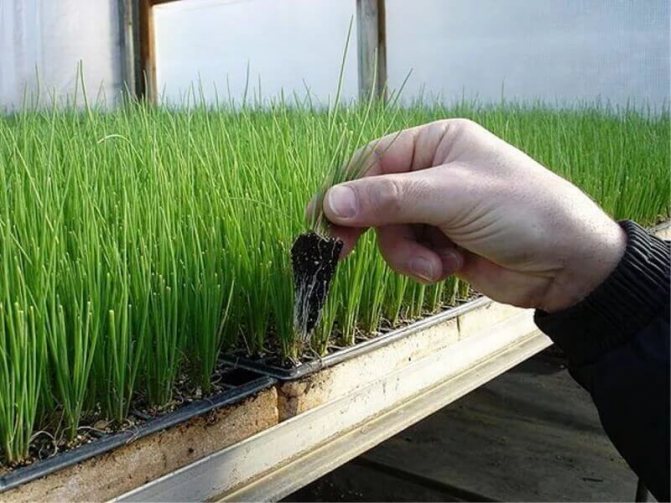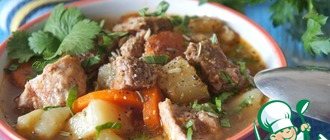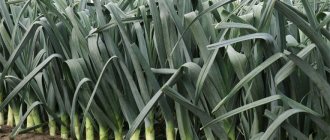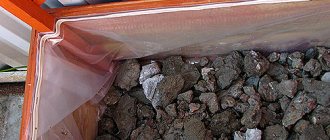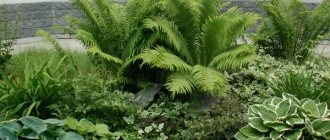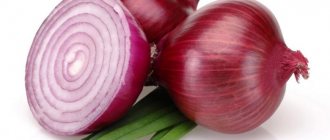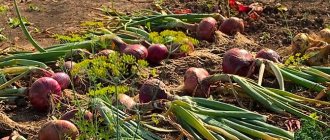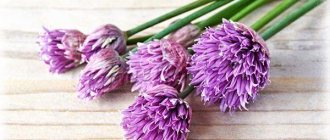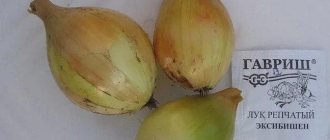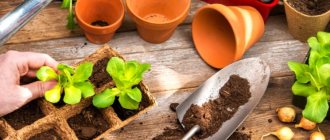Leeks are rarely seen in anyone's garden. Most often, you can buy it in a store or market. Gardeners in vain do not grow this vegetable on their site. After all, it is this onion that brings more harvest than onions. At the same time, it has a more subtle spicy taste. The second name for leeks is pearl onions. It has a large number of beneficial and nutritious substances. First of all, it is ascorbic acid, thanks to which onions can be stored for a long time. The vegetable also contains:
- vitamins of groups B, A, PP, E, H;
- calcium;
- magnesium;
- sodium;
- phosphorus;
- iron.
In addition, leeks are very valuable in the preparation of sauces, salads, first and second courses, fillings. At the same time, growing leeks from seeds is very simple.
Leek
Depending on which region of Russia the leek is planted in, cultivation depends on the planting method. For example, in the southern regions of the country, planting is done by seed. In other regions, seedlings are planted.
It should be remembered that for each area you need to select the appropriate variety of Piraeus onions. In the Moscow region and the Leningrad region, early and mid-season varieties are grown, such as:
- Vesta;
- Casimir;
- Columbus;
- Elephant;
- Goliath;
- Tango;
- Winner.
In Siberia and the Urals, early varieties are grown, to which should be added the Karantansky variety of piraeus onions.
The wheatgrass onion differs from the onion in that the first has a white leg instead of a bulb. In order to get a product in the form of a leg, the plant must grow for at least six months. When sowing onions with seeds only as greens, green feathers are harvested in July. From the moment of sowing to the collection of greens, at least eighty days must pass.
The successful planting of leeks outdoors in spring depends on the correct soil. For this plant, it is important that the soil is fertile and perfectly accepts the introduction of organic and mineral fertilizers. The area for planting leeks must contain nutrients, have the required amount of moisture. In addition, the area must be cleared of weeds. Leek requires fertilizers that contain nitrogen. Thanks to him, he is actively growing and developing.
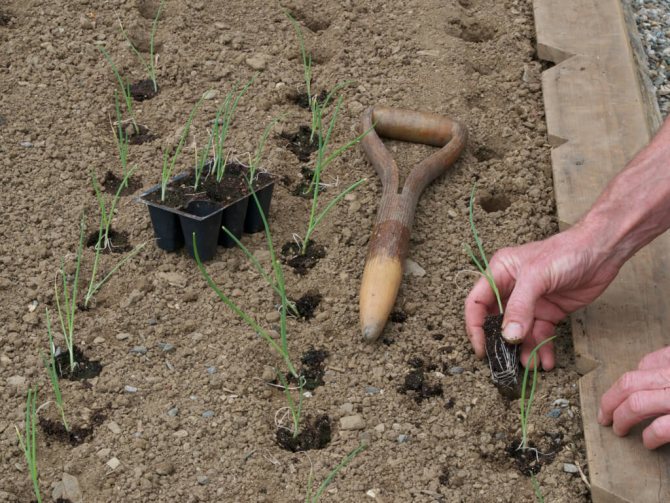
It is important to choose the right soil
The best soil for this plant is loamy soil, completely free of weeds and at the same time not acidic. The ground under the plant should be damp, but not wet. If the soil is not suitable for growing onions, then they will not give a good harvest. The stems will develop poorly and the stem will be thin. Planting should be done on soil fertilized with manure.
Main characteristics and popular varieties of leeks
Leeks look more like garlic in appearance than onions.
Description of the plant
It has wide and flat leaves, and the bulb in the usual sense of the word is practically absent. More precisely, in the lower part of the plant is the so-called leg - a slight thickening of the stem, which is from 10 to 50 cm in height (depending on the variety and level of agricultural technology). Strong leaves grow from this stem, and as a result, the full height of the plant can reach almost a meter, and in rare cases even more. The underground part rarely reaches 5 cm in diameter.
The number of leaves on one plant is from 10 to 15 pieces, they are quite fleshy, edible (although the main nutritional value is the leg), so the mass of the entire bush is about 300 g, and sometimes up to half a kilogram. Since the leaves are not pure green in color, but with a blue tint, leeks are often called "pearl" onions.
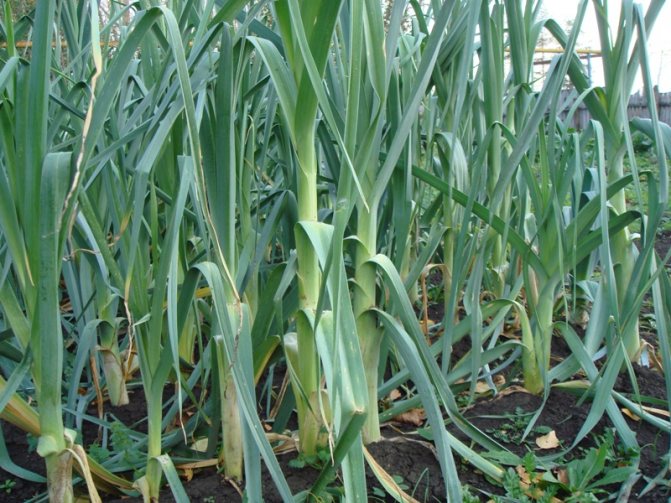

Seeing a leek for the first time, you might think that it is garlic.
Biologically, leek is a typical biennial plant. This means that in the first year after sowing the seeds, a powerful branched rhizome, a leg (a false stem of almost white color) and leaves are formed, and in the second year - a seed arrow. This arrow can reach two meters in height and end in a white-pink umbellate inflorescence, from which seeds ripen by the beginning of autumn. The seeds are similar in shape and color to the usual "nigella", that is, onion seeds, they have little and the germination period is two years.
The prevalence of culture in different countries
In our country, leeks are not very well known, but this onion has a long history. Its homeland is considered to be Western Asia, from where it was brought to the Mediterranean, spread throughout Europe, and then ended up in most Asian countries and America.
Of the European countries, most leeks are grown in France, a country renowned for its culinary delights.
Why leeks are good for you
The leek leaves are slightly spicy to taste, much softer than most other members of the Onion family. The whitish leg is considered the tastiest part. Leek is rich in various vitamins and minerals, contains a lot of protein and sulfur-containing essential oils, similar to those found in garlic. Thanks to such a diverse chemical composition, leeks induce appetite, regulate peristalsis, and improve liver activity.
Leeks have a slight diuretic effect and are indicated for gout and rheumatism.
Cooking applications
From this bow:
- make soups;
- make salads;
- fried, pickled.
In different countries, leek dishes are mainly either the main course, or, conversely, side dishes. Leek dishes cooked in batter are considered delicious. When storing leeks, the amount of vitamins does not decrease for a long time, its freshness pleases gourmets even in winter.
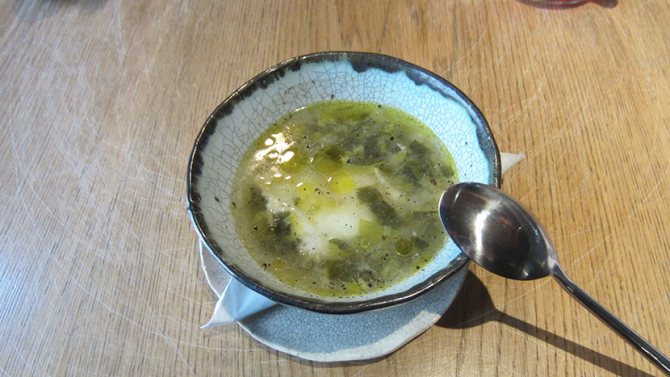

The list of leek recipes is huge, you can even find a lot of soups
How difficult is it to grow this vegetable
From the point of view of agricultural technology, leeks are somewhat more difficult to care for than other types of onions, but they are also cold-resistant, although they are a resident of warm countries. Its seeds can germinate at minimal positive temperatures, but leeks need at least + 15 ° C for normal functioning. This culture needs good lighting, fertile neutral soil, and sufficient moisture. Under a thick layer of snow, many leek varieties winter well. Therefore, if you leave the plants in the garden, the crop can be harvested in the spring, when the weather is warm.
Leek varieties
About three dozen varieties of leeks are grown on the territory of our country. However, in terms of appearance and structure, there is little difference between them. Most varieties have a slight thickening in the lower part, and only the Elephant (Elephant) variety is an exception in this regard: it has an absolutely smooth stem.
According to the ripening period, three groups of leek varieties are distinguished:
- early ripening (summer) varieties with a growing season of no more than 130–150 days: they form large legs, sometimes weighing up to 400 g;
- mid-season (autumn) varieties: ripen almost six months after germination, give a less weighty leg, but its taste is valued higher than that of early varieties;
- late-ripening (winter) varieties: give about the same yield as autumn ones, but ripen in a period exceeding 6 months; such onions are best kept.
Early maturing varieties
Among the summer varieties that are mainly used fresh and for canning, the following are the most popular:
- Columbus is a Dutch cold-resistant variety, forming a leg weighing up to 400 g, ripening in almost three months and requiring minimal maintenance (the operations of hilling and bleaching of the leg are optional);
- Vesta is a high-yielding variety, plants are almost one and a half meters high, while the leg can be 30-50 cm long. The variety is considered disease- and drought-resistant, but requires regular qualified care;
- The trunk of an elephant is a variety that differs from other early ripening ones in that its harvest can be stored for several months in suitable conditions (sand, vertical arrangement). The leg is up to 30 cm long, but it grows as such only with regular hilling.
Photo: early ripe leek varieties
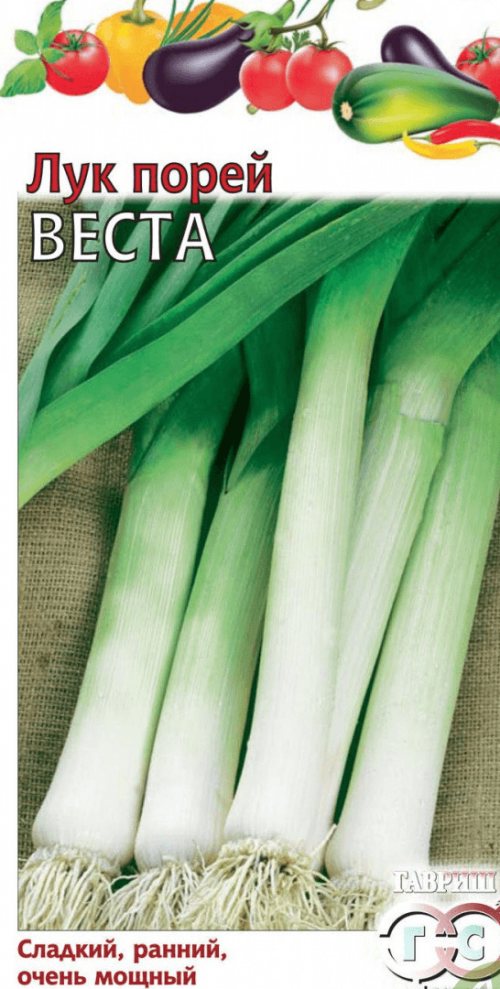

Vesta is an excellent leek variety, but demanding on growing conditions
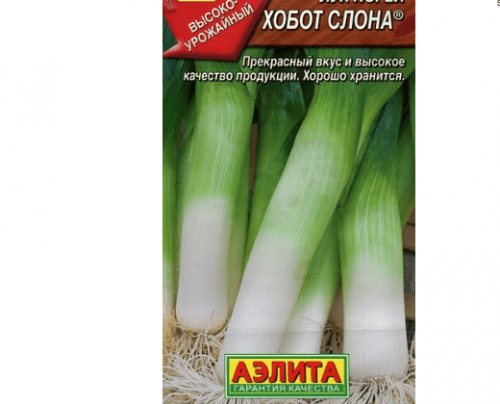

The elephant trunk leeks can be stored for several months under suitable conditions
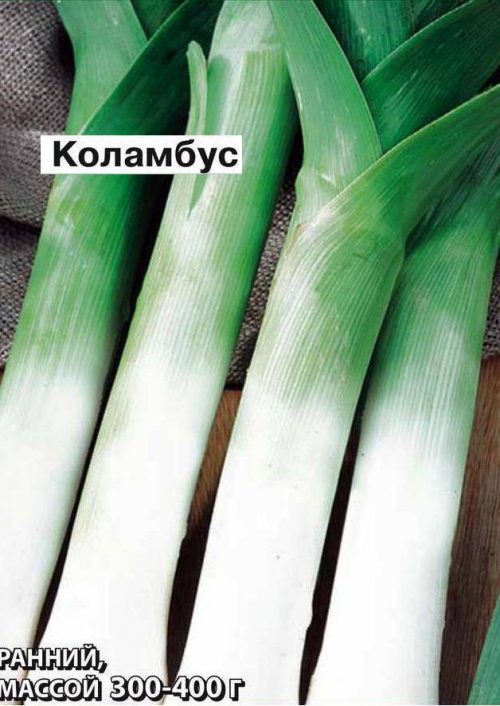

Columbus is a Dutch cold-tolerant leek variety
Mid-season varieties
Many excellent varieties belong to mid-season, they can be stored for up to 2.5 months. The outstanding representatives of such varieties are the following:
- Casimir is a high-yielding variety, a white leg up to 30 cm high, the leaves grow almost vertically. Since the bulb is almost completely absent, it is very easy to process the crop (harvest it and peel it for use);
- The Winner is a frost-resistant variety that gives a white leg about 20 cm high with a diameter of up to 4 cm. The Winner considers the taste of green-gray leaves to be almost as good as the taste of the leg;
- Bandit is a Dutch variety with a low white part (usually only up to 7 cm, but with proper care, its height can be significantly increased). The variety is frost-resistant, with careful shelter for the winter in many regions, harvesting can be postponed until spring.
Photo: mid-season leek varieties
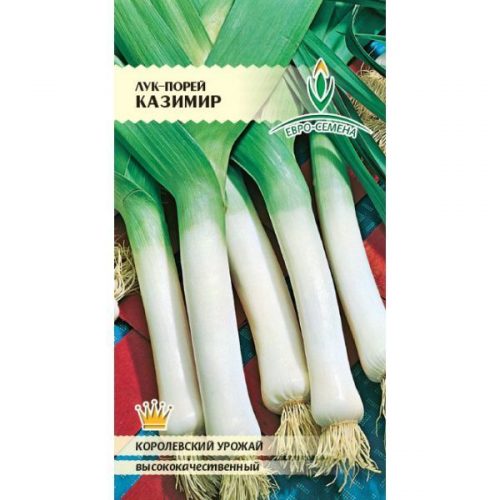

Casimir is a high-yielding leek variety
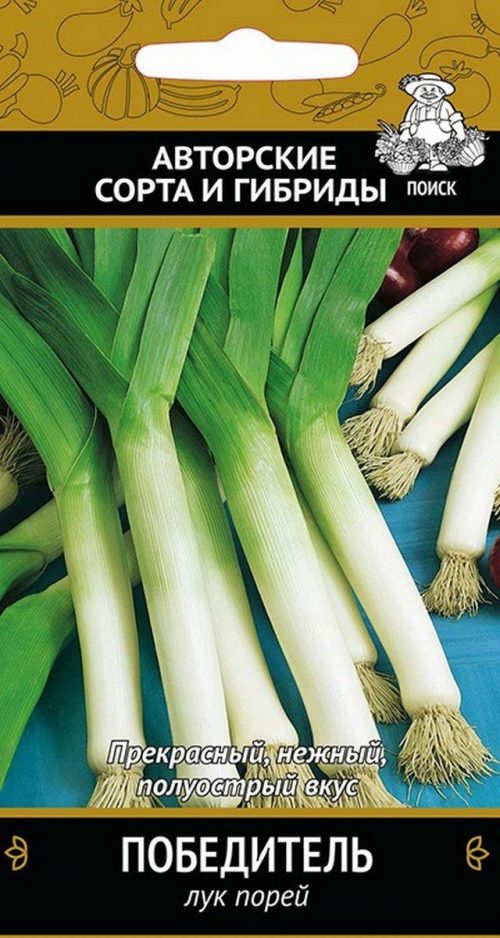

The winner is considered to be one of the best peninsular leek varieties


Bandit - a frost-resistant leek variety
Winter varieties
Among the winter varieties of leeks, the following can be noted:
- Karantansky is a variety entered in the State Register of Breeding Achievements of the Russian Federation in 1961 and still has not lost its commercial value. This onion winters well in the garden, full ripening occurs at about 200 days of age, until the very frost gives a tasty and productive green mass. Leg up to 25 cm high, semi-sharp taste;
- Elephant (Elephant) is a Czech variety, a plant up to a meter high with wide blue-green leaves. Frost and heat resistant. The leg is small, spicy taste, used in the preparation of dishes from meat and fish;
- A good fellow - a universal variety that appeared several years ago. Forms a tall plant with vertical blue-green leaves and a thick stem up to 30 cm high.
Photo gallery: winter leek varieties
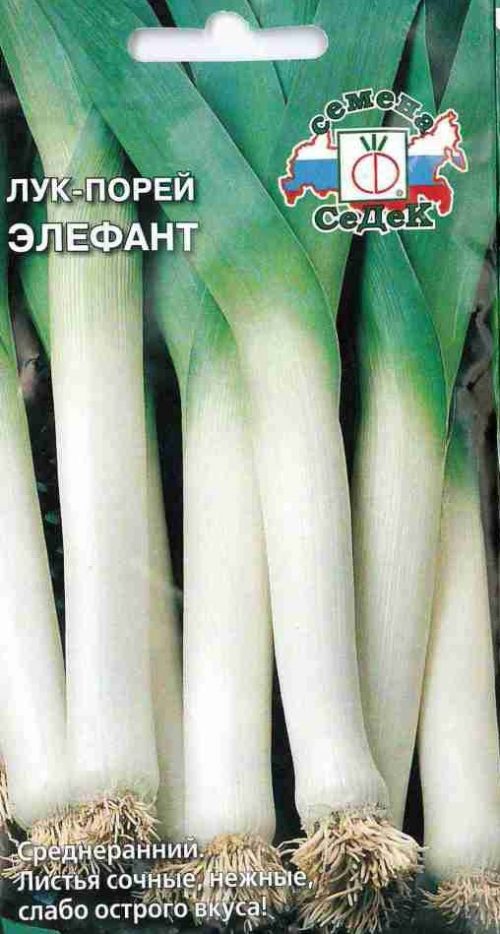

Leeks of the Elephant variety - a plant up to a meter high with wide blue-green leaves
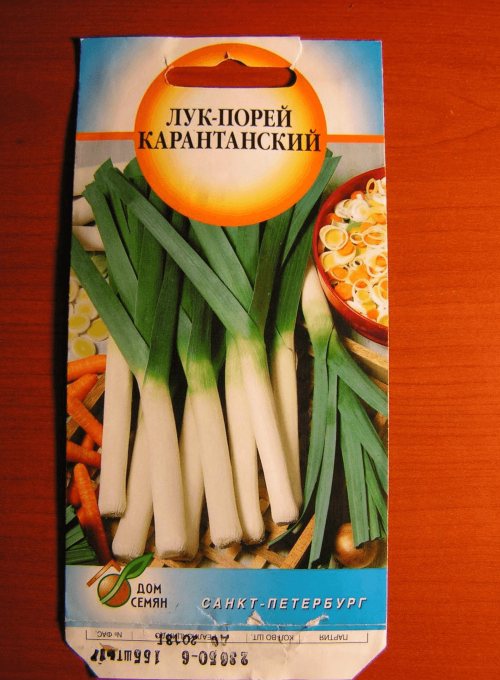

Karantansky - the most famous variety of leeks Good fellow - a variety of leeks for universal use
Video: leek - a description of the culture, features of agricultural technology and the choice of variety
Sowing dates
Planting dates for leeks differ depending on the climatic characteristics of a particular region and variety. Auspicious dates of the lunar calendar are also taken into account.
Early ripening varieties are sown in April, mid-ripening ones - in late February-early March, late-ripening ones - in late January-early February.
In the northern regions of Russia, seedlings are sown in April-May. In the central regions with a more favorable climate, sowing work is carried out in the second decade of February. In the south, leeks are sown directly into the ground in late May and early June.
Sowing dates according to the lunar calendar for 2020:
- January - 1, 5-9, 11, 14-16, 21, 22, 25, 29;
- February - 2-4, 10, 13-15, 17, 18, 20, 21, 24, 28, 29;
- March - 1, 3-5, 10, 11, 14-16, 18, 19, 21, 22, 29-31;
- April - 2-4, 6, 7, 9, 10, 14, 15, 23, 25, 27-29;
- May - 2, 3, 5, 6, 9, 12-14, 20, 22, 23, 25, 27-29;
- June - 1, 2, 4, 8, 11-13, 18, 19, 22, 24, 26-29.
Planting leeks in open ground
In our country, leeks are grown everywhere, and almost all varieties are recommended for all climatic regions, that is, in this regard, the State Register of Breeding Achievements of the Russian Federation considers them universal. However, the agricultural technology of leeks in different regions may differ: if in the south many varieties can be grown by direct sowing of seeds in a garden bed, then in temperate and cold climatic conditions, due to the long growing season of leeks, seedlings have to be grown first. If this is not done, you can get a good harvest of greens, but not wait for the formation of a white leg.
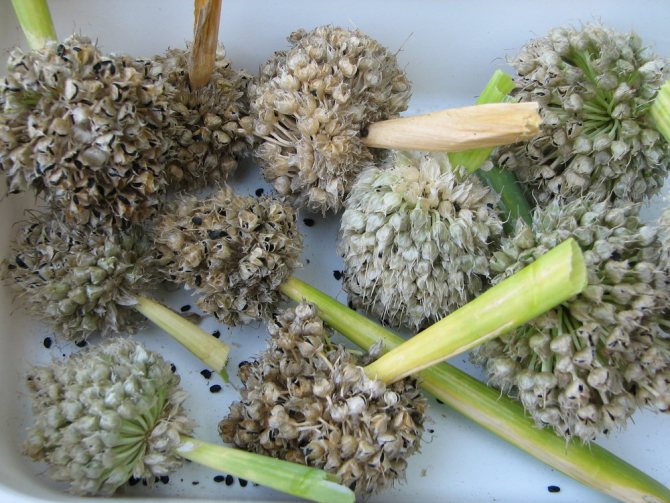

Regardless of the variety, leek seeds are practically indistinguishable from the seeds of most types of onions.
Growing seedlings
Growing onion seedlings is not difficult, it involves the usual operations and begins in late winter or the first month of spring. Seeds can be sown both in separate cups and in common boxes. When growing seedlings, seedlings are moderately watered, sometimes fed, but the most important thing when caring for seedlings is sufficient illumination. Temperature does not play a big role in this.
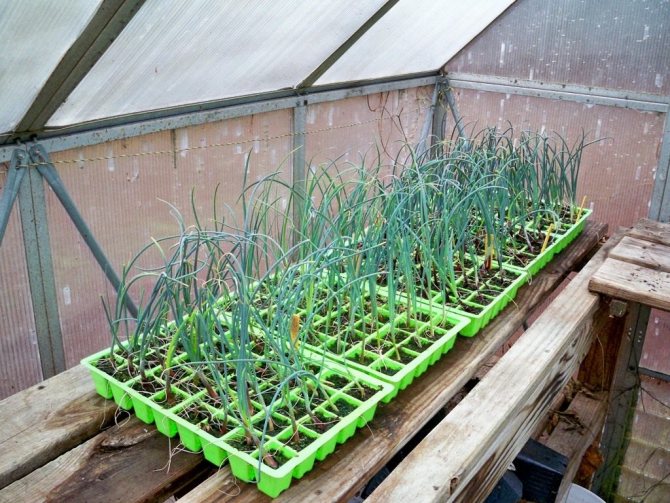

Leek seedlings grow well in conditions of sufficient light
Choosing a place for the garden
When choosing the location of the garden bed in the garden, it should be borne in mind that even the shade of the trees significantly reduces the leek yield. As with most vegetables, the garden is prepared in the fall:
- ensure that the soil is neutral, loose and fertile by adding sand, peat or humus, as well as sowing green manure;
- rhizomes of perennial weeds are carefully removed;
- add organic fertilizers: leek normally refers to any type of fertilizer, but still prefers rotted manure.
Planting seedlings in the ground
Planting seedlings on a garden bed in the middle lane begins in the first half of May. For this:
- Before planting, the leaves of the seedlings are pruned a little, the same is done with too long roots.
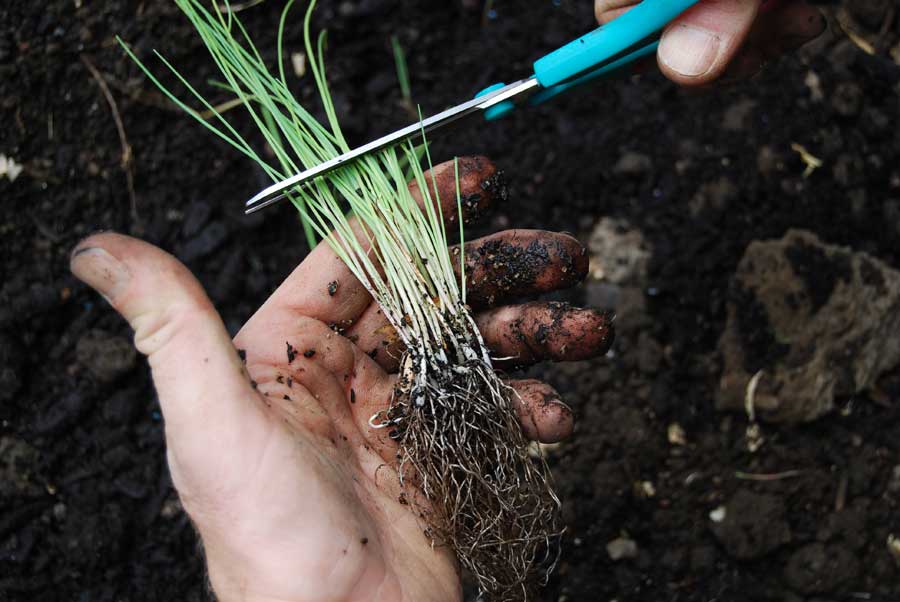

Before planting, the leaves of the leek seedlings are slightly pruned. - Seedlings are planted with a depth of up to 5 cm according to the 15 × 45 cm scheme, it is better to do this in well-watered soil, practically "in the mud", in cloudy weather or after sunset.
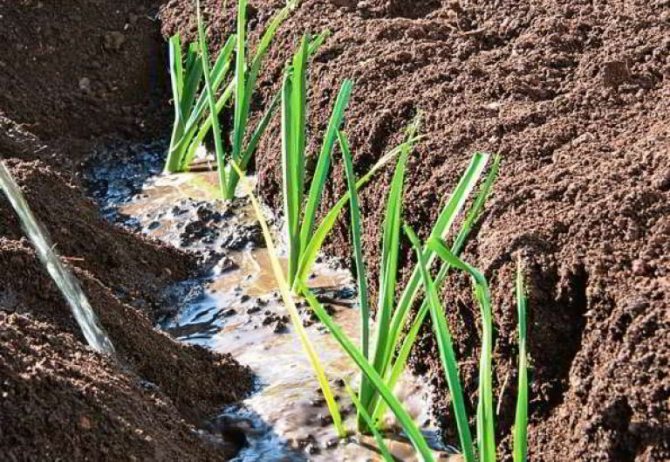

Leek seedlings are planted in well-watered soil, practically "in the mud" - After planting, the onions are thoroughly watered again.
Video: planting leek seedlings in the ground
Contraindications
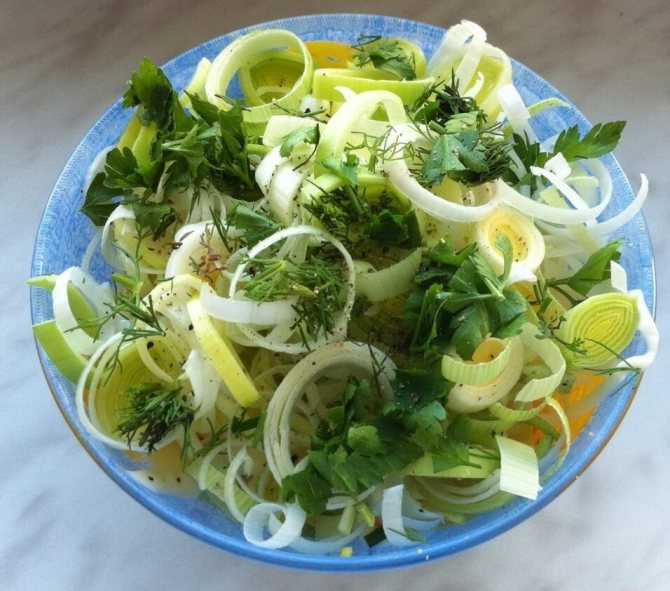

Leeks should be eliminated from the daily diet for people suffering from:
- high blood pressure;
- recurrent urticaria;
- allergies to nickel, essential oils;
- stomach ulcer, gastritis, colitis;
- increased acidity.
Use with caution during lactation: in a small amount and always after heat treatment. Track the baby's reaction. The essential oils that make up the onion saturate the mother's milk with an unpleasant odor and give it a bitter taste. It is for this reason that newborns often refuse breast milk. In addition, overeating onions can cause nausea, heartburn in the mother and bloating, colic in the baby. If, after breastfeeding, the infant's behavior changes, and nervousness appears, the consumption of leek should be discontinued.
Interestingly, if during pregnancy a woman consumed onions, the child's body is considered accustomed to the product and there should be no problems with introducing a vegetable into the baby's diet.
Leek care
This is not to say that leek is a very capricious plant, but you can get a good harvest only with careful care and basic skills in gardening.At least, without the application of certain efforts, this onion will not grow on its own or will only give foliage, and even then it is not very abundant. Caring for it includes all known operations such as watering, fertilizing, loosening, weeding, etc. Unlike ordinary onions, systematic hilling of plants is imperative. The greatest attention should be paid to the leek in the first weeks of its growth.
Watering
Constantly moist soil is a basic requirement for the growing conditions of this type of onion. Only the first 3-4 days after planting the seedlings in the garden bed is it left alone, and then the care of the plants begins. Water for irrigation does not require heating, but ice water from a hose or spring should not be watered either. Optimally - settled water with a temperature not lower than +15 ° C. The frequency of watering depends on the weather, but in the absence of rain, watering must be done at least twice a week. Consumption - not less than a bucket per 1 m2, but stagnation of water in the garden must not be allowed.
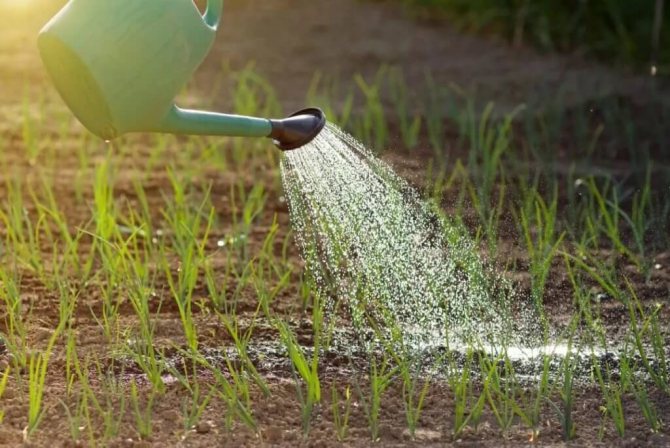

Leeks require abundant watering, but no stagnant water
Such frequent watering is required until about mid-summer, especially during an intensive growth of green mass, then they are reduced. To retain moisture, soil mulching can be used. Any traditional material is suitable for this purpose, such as chopped straw, humus, hay or peat chips.
Top dressing
If you do not feed the leek at all, the result will be very modest. Therefore, in the first half of summer, top dressing is very desirable. For this, they try to use organic fertilizers - infusions of mullein or bird droppings. It should be remembered that the maximum concentration of mullein in such an infusion should be 1 part to 8 parts of water, and bird droppings - 1:20. In the absence of these fertilizers, you can use nettle infusion, wood ash (a handful of ash per 1 m2) or complex mineral fertilizers.
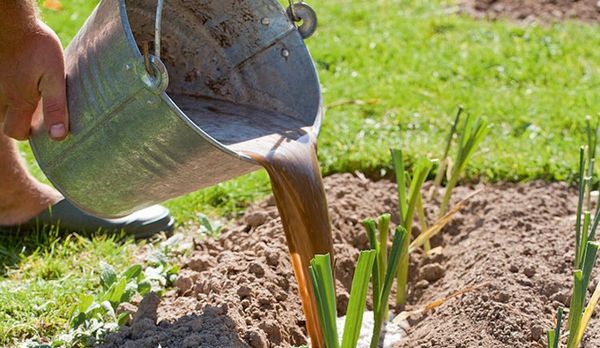

In addition to ash, almost all other dressings for leeks are applied in liquid form as solutions or infusions.
In total, 3-4 dressings are carried out per season:
- The first is given three weeks after planting the seedlings in the garden.
- The second - after about the same time interval.
- The last feeding is done again after 21 days.
Fertilizer solutions are applied in the aisles, trying not to get on the plants themselves. Fertilization with dry ash is often combined with hilling onions: ash, in addition to being nutritious, protects leeks from fungal diseases.
Pruning
The need for systematic pruning of leeks is controversial among gardeners, but sometimes it still has to be pruned. So, even when growing seedlings at home, they try to prevent the growth of leaves above 10 cm, therefore, once every two weeks, they are slightly pruned so that the root system develops more successfully and a thickening of the stem arises.
In the process of growing onions in the garden, from about the middle of summer, they begin to gradually cut off the leaves, using them for food. At the same time, many gardeners advise not to cut off the whole leaf, namely to cut it, leaving a part on the plant. It is believed that this approach practically does not weaken the leek and the leg grows of no less quality than without pruning.
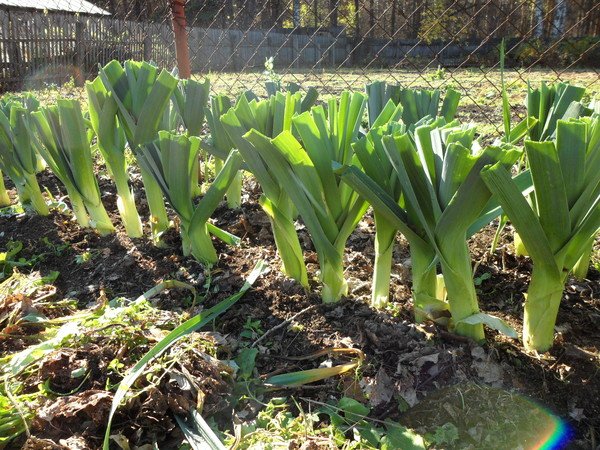

When pruning, it is better not to cut off the whole leaf, but to cut it off, leaving a part on the plant
Weeding and hilling
One of the main conditions for the growth of leeks is the complete absence of weeds in the garden, therefore, after each watering or rain, the soil must be loosened, accompanied by weeding; the greatest attention should be paid to careful removal of perennial weeds.
After the plants get stronger, and the stem reaches a diameter of 8-10 mm, the onions begin to huddle, performing this operation every two weeks. It is this most important action that makes it possible to obtain a high quality bleached leg. After each hilling in the bed, the mulch layer is renewed.Hilling is easiest to do shortly after watering.
Video: hilling leeks
Folk recipes
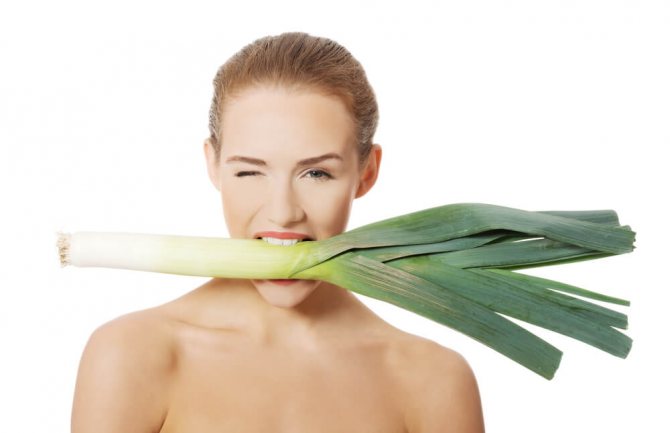

Traditional medicine recipes:
- For relieving joint pain, treating wounds, boils. In addition, this recipe relieves swelling after an insect bite (gadflies, mosquitoes, bees). Method of preparation: grind the white and green parts of the plant in a blender until a homogeneous gruel is obtained. Apply the resulting mass to the damaged area or sore area, cover with gauze, film on top, fix with a bandage. Keep the compress for 5-8 hours.
- From sore throat. Juice the leek. Gargle them up to 5 times a day for 3 days. The phytoncides that are part of the vegetable have a local antibacterial effect, kill the painful flora.
- From pneumonia. Finely chop the onion, place in a container, inhale deeply the vapors from the can. Crushed leek quickly loses its beneficial properties, so it cannot be stored in this form. Use a fresh serving of onion for each inhalation.
- With a runny nose. Squeeze the juice from the leek, instill 3 drops in each nostril 3 times a day.
- To restore potency. Grind equal amounts of celery and leeks into a smooth paste using a blender. Eat gruel 3 times a day, 50 g for 2.5 months.
- To enhance immunity. Chop the leeks, add 30 ml of olive oil. Mix everything thoroughly. Take 3 times a day for 40 g.
- From atherosclerosis. Grind 100 g of leek, squeeze the juice. Add 150 ml of honey, stir. Take 15 g of gruel 2.5 hours after a meal three times a day.
- For a violent cough. Finely chop the leek (4-5 stalks) and the garlic (1 head), boil in unpasteurized milk until the vegetables soften. Cool, add honey (to taste). Take 15 ml every hour throughout the day.
- From hypertension. Chop 20 garlic cloves, 4 leeks, 5 peeled lemons. Add 0.8 kg of sugar (preferably cane sugar) to the mixture. Pour the ingredients of the composition with 2 liters of non-hot boiled water, leave in a cool dark place for 7 days. Take 15 ml 25 minutes before meals three times a day. The course of treatment is 3 weeks.
How leeks multiply
Leeks, like other types of onions, are propagated by seeds, which appear and ripen in the second year of the plant's life. It is after overwintering that the leek grows both in the underground and in the aboveground: it throws out a powerful arrow, forms an umbrella with flowers, which form seeds as they wither. Moreover, even in the second year, leaves can be used for food, they are no worse than those that grow at the beginning.
As soon as they are ready, the seeds are collected, dried and stored until the beginning of spring, when they are sown for seedlings. At the same time, there is the possibility of sowing seeds in the garden bed and in the fall, just before the very frosts. True, there is a danger of their death if the heat lingers, and the seeds have time to germinate. Therefore, it makes sense to take a risk by sowing a small part, and continue the main work on growing leeks in the spring with sowing seeds for seedlings in boxes.
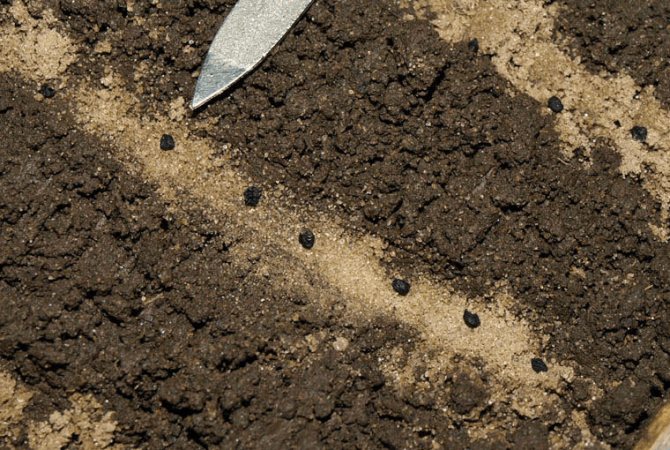

You can sow leek seeds in the garden in the fall, just before the very frosts
Guarding health
Effects on the digestive system
Pearl onion has a stimulating effect on the gastrointestinal tract, improves food digestion and appetite, eliminates dysbiosis, but at the same time irritates the walls of the stomach. Leek is absorbed very gently, does not cause gas formation in the intestines. It exhibits mild laxative and diuretic properties, ensures the normal outflow of bile, preventing the appearance of liver and gallbladder diseases. The vegetable helps to remove unprocessed food, toxins and toxins from the body.
Effects on the immune system
Onions help fight hypovitaminosis, the symptoms of which are especially acute in winter and spring. The largest amount of nutrients is concentrated in the film that covers the vegetable.Leek relieves foci of inflammation in the body (when eaten) and heals scratches and wounds on the skin (when applied externally). It strengthens the immune, nervous and skeletal systems. Fights acute respiratory diseases, colds, coughs, rhinitis. Effective for muscle fatigue, general depression and depression. Restores the body after exhausting sports.
Currently, the anticarcinogenic activity of leeks has been proven.
Effects on the cardiovascular system (CVS)
The vegetable contains iron, which helps the synthesis of hemoglobin, prevents the development of iron deficiency anemia, varicose veins. Leek has a cleansing effect on the blood, lowers cholesterol levels, and resists atherosclerosis.
Effects on the eyes
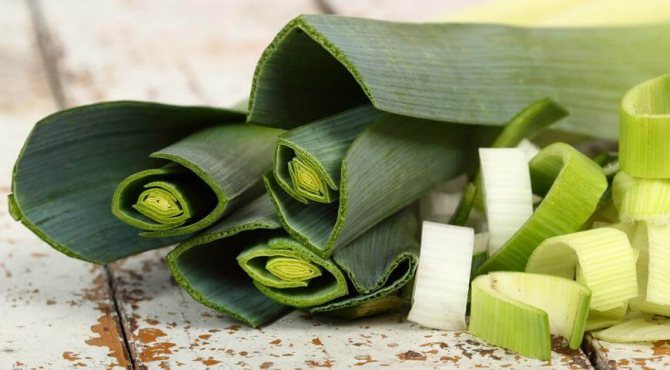

The vegetable contains zeoxanthin, lutein and carotene. These substances support good vision, help to slow down the development of age-related changes in the eyes.
Features of cultivation in different regions
Leeks grow well in all but the coldest climates. However, most varieties have a very long growing season, therefore, it is guaranteed to get a full harvest from sowing seeds directly into the garden bed only in regions with the warmest climate and long summer. Leek grows especially slowly in the first one and a half to two months after planting seedlings in the garden: it is during this period that it requires special warmth and illumination.
Of course, greenhouses could be used, but in the case of leeks, few do so: they are needed for more heat-loving crops. Therefore, in the southern regions, they simply wait for the soil to warm up to about +10 ° C and sow seeds in open ground; most onion varieties have time to give a full harvest. However, in the middle zone, in particular in the Moscow region, it is impossible to do without seedlings. This is all the more impossible in Siberia or the Urals, in a very short summer.
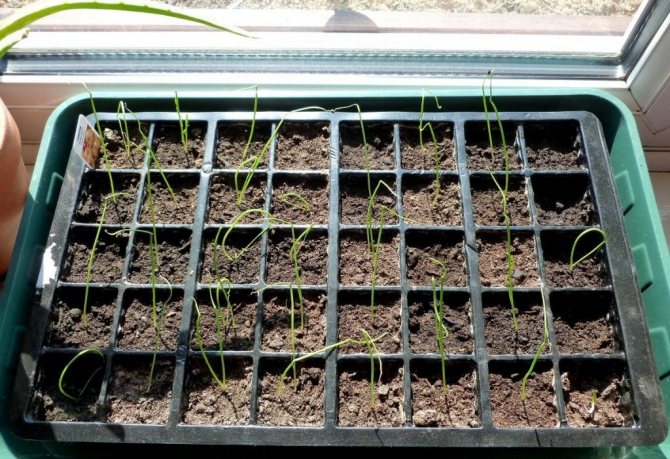

Growing leek seedlings is painstaking, but not very difficult.
In harsh climatic regions, early varieties of leek can be successfully grown, however, oddly enough, the old winter variety Karantansky remains the most popular in Siberia. Subject to timely sowing of seeds for seedlings and planting plants in a garden bed, he manages to give a crop, which is stored for quite a long time. For this, sowing in boxes is carried out already in mid-February, and seedlings are planted in the garden at the age of almost three months, when the soil warms up enough. Onions are harvested in October, just before the snow falls. When stored properly (in a cellar, upright in wet sand), Karantansky is stored until spring. Varieties with the longest growing season are grown only in the southern regions.
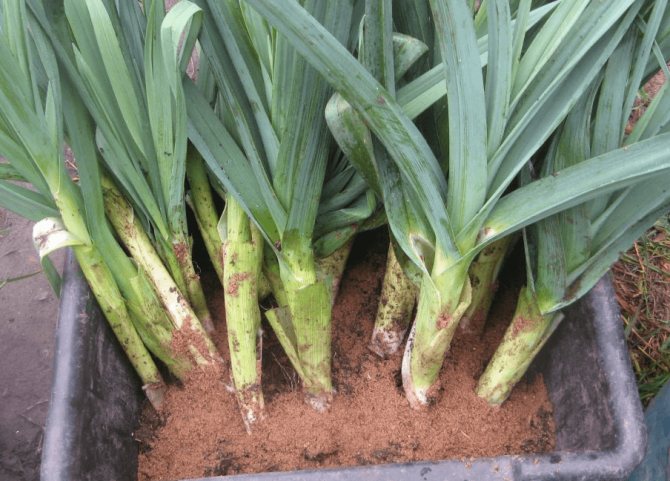

When placed in a cellar (upright in wet sand), leeks can be stored until spring
Even more successful in terms of obtaining results in such regions as the Urals, Siberia, North-West Russia and even the Moscow region is the use of cold greenhouses, in which at first, until the onset of heat, onions are grown and only then the frames are opened. In general, the principles of growing leeks in the suburbs and colder regions are no different from the generally accepted ones; try only by any means to extend the warm period for plants.
Onion diet


Leek normalizes metabolism, improves the functioning of the gallbladder, liver, gastrointestinal tract and has a diuretic effect, due to which it is recommended for use by overweight people. In addition, onions contain rutin, which prevents the formation of fat cells. To gain harmony, the vegetable is included in the daily diet as an independent dish or side dish.
Remember, the maximum amount of nutrients is concentrated in the fresh product. Bulbous vegetables contain chromium, which suppresses cravings and appetite, and controls blood glucose levels. In addition, leek is low in calories - 36 kcal per 100 grams of product.
During the period of weight loss, bulbous should dominate in the diet. They can be eaten raw or boiled. For the diet to be effective, limit the intake of fats and carbohydrates. It is highly discouraged to fry the vegetable.
For a week, the onion menu can become 2-4 kg lighter.
Diet
Day number 1
- breakfast - tomato - 0.5 pcs, cottage cheese 5% - 10 g, black bread - 1 slice, leeks - 1 pc, unsweetened herbal tea - 1 cup;
- second breakfast - apple and carrot puree - 100 g;
- lunch - onion puree soup - 250 ml;
- afternoon tea - a mix of tofu, pineapple and garlic - 150 g;
- dinner - salad of boiled chicken, corn, eggs, leeks - 100 g.
Day number 2
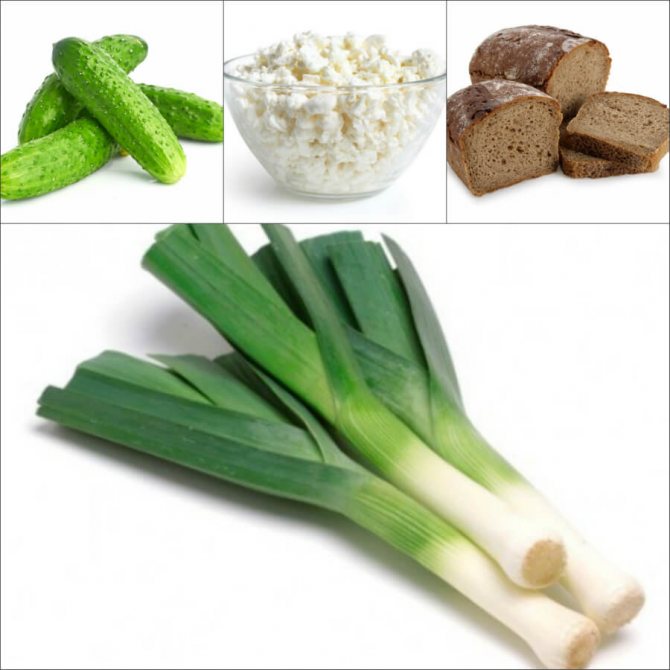

breakfast - cucumber - 1 pc, cottage cheese with leek - 100 g, black bread - 1 slice;- second breakfast - onion pie - 100 g;
- lunch - boiled chicken fillet in garlic sauce - 150 g;
- afternoon tea - a mix of olives, onions and tomatoes - 100 g;
- dinner - apple and onion soup with mustard - 200 ml.
Day number 3
- breakfast - steamed scrambled eggs with tomatoes and onions - 150 g;
- second breakfast - grapefruit juice - 150 ml;
- lunch - stewed vegetables with onions - 250 g;
- Afternoon snack - green spinach, leek and celery smoothie - 200 ml;
- dinner - cottage cheese with spinach and garlic - 150 g.
Day number 4
- breakfast - rye bread - 1 slice, onion jam - 15 g, fruit tea - 1 cup;
- second breakfast - pear - 1 pc;
- lunch - salad of squid, cucumber, leek, apple and egg, seasoned with lemon juice - 150 g;
- afternoon snack - onion pie with arugula and spinach - 100 g;
- dinner - vegetarian soup - 150 ml.
Day number 5
- breakfast - low-fat granular cottage cheese - 10 g, black bread - 2 slices, leek - 1 pc, tomato - 0.5 pc, tea with lemon;
- second breakfast - onion casserole - 100 g;
- lunch - boiled turkey meat under caramelized leek - 150 g;
- afternoon tea - orange jelly - 100 g;
- dinner - salad of bell pepper, spinach, cucumbers, tomatoes and leeks - 100 g.
Day number 6
- breakfast - oatmeal - 100 g, omelet with onions - 50 g.
- second breakfast - garlic salad - 100 g;
- lunch - pizza with low-calorie cheese and onions - 150 g;
- afternoon snack - salad with prunes, bell peppers and leeks - 100 g;
- dinner - soup with zucchini, leek - 100 g, cucumber - 1 pc.
Day number 7
- breakfast - tomato - 1 pc, durum wheat pasta with onions - 150 g;
- second breakfast - freshly squeezed apple juice - 150 ml;
- lunch - onion puree soup with croutons - 200 ml;
- afternoon snack - loaves of leek - 2 pcs;
- dinner - tomato juice with basil, garlic - 1 glass.
The onion diet is contraindicated for people with diseases of the digestive tract and a tendency to flatulence, as well as for pregnant, lactating women. Leek enhances intestinal motility, stimulates metabolism, gives satiety, saturates the body with nutrients.
Harvesting and storage
The crop can be harvested even after frost: light frost (down to about -5 ° C) does not negatively affect the taste of leeks. But if the onion is supposed to be stored for a long time, it is necessary to harvest the crop several days before frost. After digging the onion, it is slightly dried and the roots are carefully cut off, as well as the soft tops of the leaves by about a third of their length. Before cleaning in the cellar, check if there are any soil particles left between the leaves.
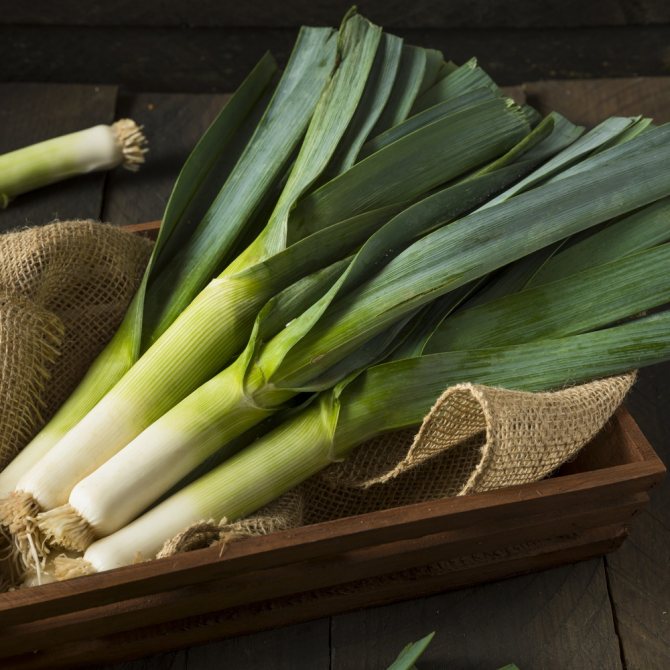

Before sending for storage, all excess is cut off from the leek.
If you need to store a small amount, then you can put the leek in the refrigerator, wrap it with cling film and pre-cool the plants. When using cellars, basements, it is important to choose options in which the temperature is 2–5 ° C. Best of all, leeks are preserved in a cellar in an upright state, as if "planted" in wet sand and sprinkled with it almost to the tops. Many late varieties are stored in this position for up to 6 months.
If you plan to cook onions in the winter, you can store the product in the freezer, after cutting it into convenient pieces. This removes all roots, as well as unnecessary parts of the leaves.
Leeks in our country are grown much less often than onions and many varieties of perennial onions used for feathers. However, leek is a very valuable product containing many minerals and almost all known vitamins. Therefore, he is gradually gaining his position in Russian vegetable gardens, although caring for leeks presents some difficulty.
Chemical composition
Leek is a dietary food product that is high in ascorbic acid and potassium salts. There are 36 calories in 100 grams of the product.
Table number 1 "Nutritional value of leeks"
| Components | Content in 100 grams of product, grams |
| Water | 88,0 |
| Carbohydrates | 6,3 |
| Mono- and disaccharides | 6,0 |
| Alimentary fiber | 2,2 |
| Protein | 2,0 |
| Ash | 1,2 |
| Starch and dextrins | 0,3 |
| Fats | 0,2 |
| Organic acids | 0,1 |
Table number 2 "Chemical composition of leeks"
| Name | Nutrient content in 100 grams of product, milligrams |
| Vitamins | |
| Ascorbic acid (C) | 35,0 |
| Beta carotene (A) | 2,0 |
| Tocopherol (E) | 0,8 |
| Niacin (B3) | 0,5 |
| Pyridoxine (B6) | 0,3 |
| Pantothenic acid (B5) | 0,12 |
| Thiamin (B1) | 0,1 |
| Riboflavin (B2) | 0,04 |
| Folic acid (B9) | 0,032 |
| Biotin (H) | 0,0014 |
| Macronutrients | |
| Potassium | 225,0 |
| Calcium | 87,0 |
| Phosphorus | 58,0 |
| Sodium | 50,0 |
| Silicon | 35,0 |
| Magnesium | 10,0 |
| Trace elements | |
| Iron | 1,0 |
| Zinc | 0,57 |
| Manganese | 0,48 |
| Copper | 0,15 |
| Boron | 0,0244 |
| Vanadium | 0,0068 |
| Cobalt | 0,0034 |
| Chromium | 0,000002 |
Mono- and disaccharides that make up leeks are mainly represented by glucose (4%), fiber (8.8%), pectins (10%). In addition, the culture contains phytosterols, most of which are beta-sitosterol (10.5%), purine bases, linolenic, linoleic, oleic unsaturated fatty acids and phytoncides. The latter, in turn, block the growth of pathogenic fungi and bacteria.

